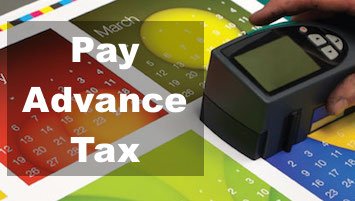Where to park money idling in savings account? Savings accounts offer to low interest.
Better is to invest it elsewhere.
Where do you keep your savings? Majority do it in savings account. What are the alternatives available?
Recently I came across a friend who works as a priority manager for a Bank.
He handles variety of clients starting from ones with middle income levels, to ones with very high income.
On an average, he said, middle income clients maintain average quarterly balance in savings a/c of Rs 1-10 lakhs.
High income earning clients generally maintains average quarterly balance close to Rs 30L-1.0 Crore.
The dilemma of my friend, the priority manager was, how to convince these people not to keep money idling in savings account.
These are such people who find solace in keeping their money parked safely in savings a/c.
But this is not a wise financial decision. Generally, these people cannot take investment decision on their own.
The reason for this inaction can be like not knowing enough about good available investment options.
But why these people do not seek help for investment decisions?
The problem with these people are, they are ‘very good’ in what they do.
Such people are hard nuts to crack.
They want an investment expert from banks, in front of their desk, to give them financial advice.
But like them, investment experts of banks are also very busy.
So the bank representatives who face these people are not ‘experts’.
This infuriates them and they shelve their investment decision.
On top of this, there are many examples of wrong investments sold by bank representatives.
I myself have seen a priority manager miss-selling a financial product.
- ULIP’s,
- Gold ETF’s,
- Monthly Income
- Plans, Insurance Plans etc
These are few options that are often misused.
These bad examples further make people defensive about random financial advice form non-experts.
Hence these people prefer to keep money in savings account and earn small interest instead of facing a loss.
Where the financially aware & ultra high salaried people invest their money :
- 30% of their portfolio is Equity (stocks or equity linked mutual funds)
- 25% of their portfolio is Cash & bank deposits.
- 20% of their portfolio is Real Estate
- 15% of their portfolio is Debt Linked Instruments (Balanced Funds etc)
- 10% of their portfolio is Gold etc
On one hand these people are very skeptical about investment advice from non-experts.
On other hand they themselves have poor investment taste.
This makes it even complicated to advise them on any specific investment option.
Hence it is better to sell a concept to these people than a detailed advice.
Hence, people who prefers to keep large chunks of money in savings in savings account may find this article helpful.
In step one:
The person should create a break-down of their total savings parked in bank account.
Creation of this break-down will not take more than 2 hours.
Suppose the persons average quarterly balance is close to Rs 1 Crore.
The break down will look like this:
| SL | Category | Percentage | Amount (INR) | Holding Time (n) |
| 1 | Cash – in Bank to manage short term needs | 20% | 20,00,000 | n <12 mon |
| 2 | Cash – in Bank FD | 10% | 10,00,000 | 12mon<n<24mon |
| 3 | Mutual Fund – Balanced | 20% | 20,00,000 | 24mon<n<36mon |
| 4 | Mutual Fund – Equity | 10% | 10,00,000 | n>36 mon |
| 5 | Real Estate – Down payment | 25% | 25,00,000 | n>36 mon |
| 6 | Gold – ETF | 5% | 05,00,000 | 24mon<n<36mon |
| 100% | INR 1 Crore |
In step two:
Here the person should identify how to invest. Like in above example, the person has decided to do the following:
- Cash – Keep 20% parked in savings account & 10% in fixed deposit.
- Mutual Fund – Invest 10% in balanced fund and 20% in equity linked fund
- Real Estate – Invest 20% in Real estate investment trusts (REIT’s)
- Gold – Invest balance 10% in Exchange Traded Funds (ETF)
In step three:
Now its time to execute the plan:
- The first thing the person can do immediately is to create a Online Fixed Deposit (FD).
These days with use of online banking FD requests can be created in few minutes.
- The second thing the person should do is to start a monthly SIP.
Start the SIP in Balanced & Equity mutual fund with target of investing 10%+20% funds in next 12 months.
These days SIP can be started online using online trading accounts.
- Third thing the person should do is to buy a real estate property.
This can be a residential or commercial property.
The funds should be used as down payment (self-contribution) to avail home loan.
Here the care must be taken that self-contribution should not be less than 60% of total property cost.
- Fourth thing the person should do is to buy Online ETF.
It is advisable to spread the purchase of gold ETF evenly for next 12 months.
Please note that the gold is included in portfolio more as an investment.
In step four:
Here the person should be ready to review the portfolio at the end of 12 months.
During the review percentage break-down for next 12 months investment.
This activity one has to do only once at the start of the year.
Henceforth, all investment will be put on auto-cycle.



